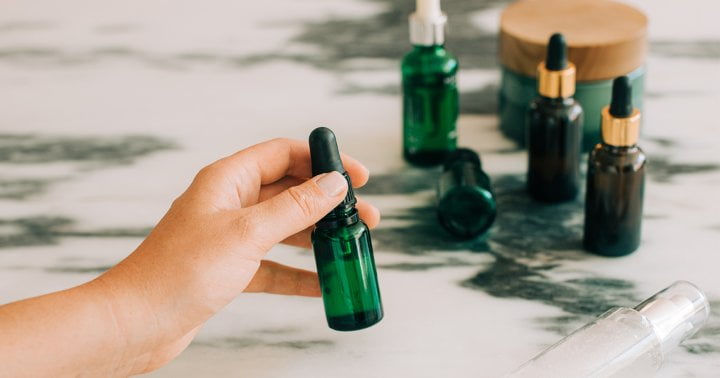Are Postbiotics The New Probiotics In Skin Care? The Surprising New Research

So where does this leave biotic skin care in general? The need to innovate. Technically, those non-living “probiotics” could fall under the postbiotic umbrella, but as we’ve discussed—the jury is still out as to if they’re beneficial for the skin. Regardless, they are certainly not innovative.
Instead we look to technologically advanced, unique, and highly-targeted postbiotics to care for the skin.
Researchers have been able to identify key, beneficial outputs from the bacteria living on our skin naturally. I like to think of these as synergistic gifts, from our microbiome to our skin; our skin, in turn, becomes a more harmonious and habitable place for the bacteria. A beautiful cycle is born. These outputs are called postbiotics.
In our skin’s natural ecosystem, postbiotics come in the form of several key outputs. For example, the strain Staphylococcus epidermidis produces specific serine protease enzymes and the strain Staphylococcus hominis produces antimicrobial peptides, both of which support the skin’s immune function.
In an ideal world—one in which your skin’s ecosystem is unbothered by environmental agitators, internal stressors, and other damaging irritants—your microbiome would do this all on it’s own, all of the time. That’s not the world we live in.
So not only were researchers able to identify these very specific outputs, they were able to recreate them, en masse, without having to inactivate or fragment bacteria (like para probiotics or lysates). This technological development means researchers can create targeted actives—of which are able to immediately activate cross talking with the skin directly.
Textbook sounding explanation aside, this is very cool. See, when actives are able to directly cross talk with the skin, they can inspire changes in skin behavior—rather than just enacting superficial changes. (It’s why dermatologists obsess over retinol’s ability to interact with retinoid receptors or L-ascorbic acid’s ability to inspire collagen cross linking.)
In the case of postbiotics, we find a few impressive changes. (And a fair warning, we get very science-heavy here, but it’s a dense topic). Let’s look at Lactobacillales, the “educational” bacteria of the skin. It’s actually a strain of bacteria that populates our skin in our youth, but declines as we age. As its role as educators, it teaches skin to act young, protect itself, and revitalize barrier function. Its postbiotics are things like oligopeptides (even more specifically oligopeptide-5 through 13), fatty acids (including UFA, PUFA, and EFA), as well as biosurfactants, like rhamnolipids. And now, through modern technology we are able to bioidentically recreate these natural postbiotics and infuse them into skin care.
Once on the skin, they are able to cross talk with various receptors (such as G-Protein coupled receptors, epidermal growth factor-receptors and toll-like receptors) to improve the epidermis framework regeneration, skin hydration, reduce signs of aging thanks to exposure to irritants and pollutants, stimulate microcirculation, support the skin’s immune system, and calm inflammation.
This article was originally published by mindbodygreen.com. Read the original article here.


